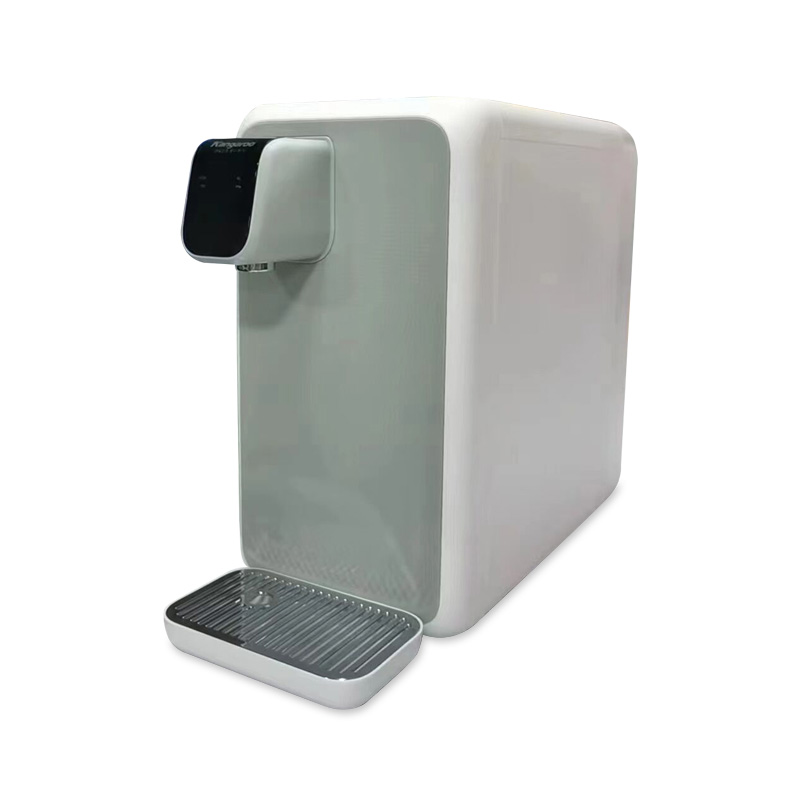Which technique is used in water purifiers?
2024-07-04
Water purifiers use various techniques to remove contaminants and impurities from water, ensuring it is safe for consumption. Here are some of the most common techniques used in water purifiers:

1. Filtration
Types of Filtration:
1. Sediment Filtration:
- Removes large particles, such as sand, dirt, and rust, from the water.
- Often the first stage in a multi-stage filtration system.
2. Activated Carbon Filtration:
- Uses activated carbon to remove chlorine, organic compounds, and some heavy metals.
- Improves taste and odor of the water.
3. Ceramic Filtration:
- Uses porous ceramic material to filter out bacteria, protozoa, and cysts.
- Suitable for removing particulate contaminants.
2. Reverse Osmosis (RO)
- Process:
- Uses a semi-permeable membrane to remove dissolved salts, heavy metals, and other impurities.
- Water is forced through the membrane under pressure, leaving contaminants behind.
- Advantages:
- Highly effective in removing a wide range of contaminants.
- Produces very pure water.
- Considerations:
- May require a storage tank due to the slow filtration process.
- Wastewater is produced, which needs to be managed.
3. Ultraviolet (UV) Purification
- Process:
- Uses ultraviolet light to disinfect water by killing bacteria, viruses, and other microorganisms.
- UV light penetrates the cells of microorganisms, disrupting their DNA and rendering them inactive.
- Advantages:
- Effective in sterilizing water without adding chemicals.
- Requires minimal maintenance.
- Considerations:
- Does not remove chemical contaminants or particulates.
- Requires electricity to operate.
4. Ultrafiltration (UF)
- Process:
- Uses a membrane with tiny pores to filter out bacteria, viruses, and other pathogens.
- Operates at a lower pressure compared to reverse osmosis.
- Advantages:
- Removes microorganisms and some larger particles.
- Does not require electricity in most cases.
- Considerations:
- Does not remove dissolved salts and some chemicals.
5. Distillation
- Process:
- Involves heating water to create steam, which is then condensed back into liquid form.
- Removes most contaminants, including salts, heavy metals, and microorganisms, as they do not evaporate with the water.
- Advantages:
- Produces highly purified water.
- Effective against a wide range of contaminants.
- Considerations:
- Energy-intensive and slow process.
- May not be practical for large volumes of water.
6. Ion Exchange
- Process:
- Uses resin beads to exchange ions in the water, typically used to soften water by removing calcium and magnesium ions.
- Can also be used to remove other specific ions, such as nitrates or heavy metals.
- Advantages:
- Effective in water softening and specific ion removal.
- Can be regenerated and reused.
- Considerations:
- Does not remove all types of contaminants.
- Requires periodic regeneration with salt or other chemicals.
7. Electrodeionization (EDI)
- Process:
- Combines ion exchange and electricity to continuously remove ionized species from water.
- Often used in conjunction with reverse osmosis.
- Advantages:
- Produces high-purity water.
- Continuous operation without the need for chemical regeneration.
- Considerations:
- High initial cost.
- Requires pre-treatment of water to prevent fouling.
Combining Techniques
- Many modern water purifiers use a combination of these techniques to achieve comprehensive purification. For example, a purifier might use sediment and activated carbon filtration, followed by reverse osmosis and UV purification, to ensure the water is free from a wide range of contaminants.
Each technique has its advantages and limitations, and the choice of method often depends on the specific contaminants present in the water and the desired level of purification.


